The National Fire Protection Association (NFPA) reported 365,000 and 2,380 deaths associated with home structure fires last year alone, 50 of which were in Minnesota. That bears a call to attention when it comes to planning for an escape in case of fire. Fires can take over a home in a matter of seconds, which means that could be all the time you have to get out. Here are some tips to help you have a plan in case of fire.
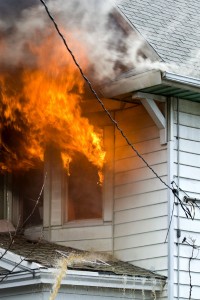
One preventative measure you can take is to schedule annual cleaning and inspection of your chimney — even if you don’t use it.
Sound the alarm. Install smoke detectors outside of every room in the house and in central gathering places. Check those batteries every 6 months by pushing the test button on each detector.
Know your way out. You should have at least two exits for each room in the house (through a door or window). If you have children, it’s helpful to draw out a map of your home, marking all the doors and windows clearly and drawing up your escape route, especially from your child’s bedroom. Make sure you have a fire safety plan in place that everyone in your home knows about. We all hope to never have to use our plans, but it can make the difference between life and death.
Know your numbers. You shouldn’t be the only one who knows which house is yours. City codes usually state that your house number needs to be displayed clearly outside your home, either on the front of your home or on the mailbox so it can be seen clearly from the street. This is for safety purposes, that way the fire department can find your home quickly. And speaking of the fire department, make sure everyone in your home knows the correct phone number in case of emergency.
Know your appliances. Keeping your fireplace and chimney functioning properly is important to us because your safety is important to us. The NFPA and CSIA recommend annual chimney inspections and cleanings of to ensure that your chimney isn’t going to be the cause of a home fire. Contact your local fire department for other tips and measures you can take for fire safety.
Relining Your Chimney
Behind-the-scenes players don’t always get their due praise, and that’s definitely true when it comes to chimney systems. Aside of the very top of the chimney, you don’t really see your flue liner, but it’s by far one of the most important parts of your chimney system, contributing both to improved safety and improved performance.
When we get service calls for drafting problems, often enough the culprit is the chimney liner. And that’s just one of the problems that comes up with a chimney liner isn’t able to do its job.
The Quick Version Of Why Your Chimney Liner Is So Important:
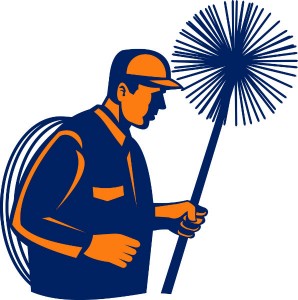
Your flue liner acts a shield that protects the exterior masonry of your chimney.
The chimney liner helps insulate the internal workings of your chimney structure — and the combustible materials behind the chimney — from the high heat produced in your firebox. The more heat that gets to those materials, the more chance you have of wood drying out and potentially catching fire. With a strong liner providing a buffer, you’re drastically reducing that possibility.
Your liner also creates a smooth, smoke-tight surface that encourages proper draft. A craggy surface impedes flow, and gaps and cracks act like a split in a drinking straw — no matter how much upward draft you apply, the performance just isn’t there.
A flue that isn’t sized correctly to vent the appliance it’s attached to won’t work correctly either — appliances are made to work with a specifically sized flue. One that’s too small won’t allow the proper draft, and one that’s too big can lead to more smoke and more creosote.
So, when your liner is damaged or isn’t properly doing its job, your chimney system’s performance and safety suffer, in a big way.
Why You Might Reline Your Chimney
When Jack Pixley Chimney technicians recommend relining your chimney, it’s usually for one of these reasons:
– Your clay tile liner has cracks or gaps that are affecting your chimney’s ability to draft properly, and creating a potential fire hazard.
– You’ve had or are having a new appliance installed that makes it necessary for your flue to be resized, by installing a new stainless steel liner.
– Your historic fireplace doesn’t have a liner at all, leaving your chimney system performing poorly (and seriously unsafe).
If you’re having draft or smoking issues, or other performance problems with your chimney system, call Jack Pixley Sweeps. We can inspect your system. and see if a relining — or another kind of repair — will fix the issue!
To those of us living in the Minneapolis / St. Paul areas, keeping warm is a top priority for more of the year than we’d like to admit. Many homeowners use wood stoves and fireplaces to supplement central heating, so it’s important to know how to care for your wood burning appliance. If you have a wood stove, some of the following tips can be helpful.
First off, let’s cover the don’ts. Never burn driftwood, artificial logs, treated wood, or trash, which could contain zinc, sulfur, plastic, or lead. It might be easier to assume that if you can seal the door, you’re not breathing anything dangerous, but these things can emit harmful gases when burned that could start a chimney fire or compromise your air quality.
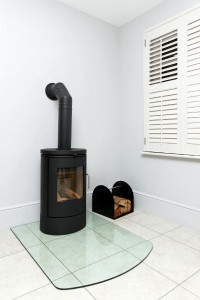
Make sure that any wood you use is properly seasoned. Wet or green wood will cause additional creosote buildup.
As with any wood burning appliance, it is always best to burn only dry, seasoned wood. This will maximize heating efficiency and minimize creosote buildup. Small, hot fires that range between 300°-400° degrees is what you’re aiming for. If you have a stack thermometer installed, it’s easier to maintain this temperature for optimum efficiency and the least amount of pollution. Another way to determine if your fire is burning hot and clean is to take a look outside. The less smoke you see coming out of chimney the better.
Keep those air-intake vents clean. Ash can collect around the vents, so be sure to remove it regularly. Not only will this help you keep your fire hotter, it will also mean that your fire won’t require as much oxygen to burn. (And guess where the oxygen comes from? That’s right, your home.) Another thing to keep in mind is that other exhaust appliances can interfere with the air consumed by your wood stove. If the fire doesn’t have enough air, smoke will reverse its flow and enter your home.
Make sure your stove is safe. A safety tested wood stove will bear an NFPA (National Fire Protection Association) label to identify it as being in compliance with building and safety codes. At Jack Pixley, we are equipped to install top-quality wood stoves that adhere to safety codes, and we’re certified to keep your stove and chimney clean and in proper working order. We know what to look for and where, and are here to look out for your safety.
A wood stove can be a great asset for keeping your home warm, but remember that heavy use also means faster creosote buildup. Creosote buildup is a part of every wood burning appliance, no matter how efficient your fires are, and it’s important to keep the chimney clear of creosote or any other obstruction. The Chimney Safety Institute of America recommends having your wood stove and chimney inspected and cleaned at least annually to ensure that every component is working properly and safely. Don’t hesitate to give us a call at (763) 422-0481. We also offer convenient online scheduling if you’re strapped for time.
Correct Firewood
What type of wood should I burn? The moisture content of firewood is actually more important than the species. Trees are comprised of 40-60% water. If wood is not seasoned, all the fire’s energy is used to burn the water instead of creating heat. Wood should be seasoned for at least 6 months and reduced to 20-25% moisture. Failure to burn seasoned wood can cause a build up of creosote, which means a less safe and less clean burn. This is one thing your certified sweep will look for during inspection.
Almost all wood will burn at the same temperature, though dense or hard wood will burn longer. Lightweight, soft woods like pine burn faster and
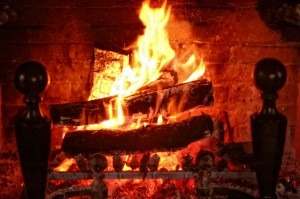
Always burn seasoned firewood and not green wood or chemically treated wood.
will create more creosote buildup in your chimney, though in small doses, this can actually be helpful. Soft woods are easier to light and can help the more dense wood to light evenly. Mixtures of hard and soft woods are a great way to build a long lasting fire that starts easily.
Where should I buy wood? The increasingly popular slogan ‘buy local’ is a good one to follow when purchasing wood. Locally harvested firewood supports sustainable forestry and is usually less expensive because you aren’t paying for transportation cost. Choosing local will also reduce the risks that come with bringing insects and fungi that are not native.
If you aren’t familiar with how to tell seasoned from unseasoned, buy from a licensed dealer so you don’t end up with sputtering wood that clogs your chimney with creosote. Burning seasoned wood is extremely important, since green wood will give you a lot less heat and a lot more creosote, which can cause chimney fire. Here are some tips to help you tell green wood from seasoned.
Seasoned wood:
- Turns to grey or yellow depending on species
- No moisture inside when split open
- Usually has cracks on the ends that indicate dryness
- Will produce a hollow sound when 2 pieces are banged together
Most of the time, wood is sold by the chord, which usually measures about 8 feet long, 4 feet wide and 4 feet high. This measurement will vary depending on how tight or loose the wood is stacked.
Understanding the Anatomy of Your Chimney
Many people have fireplaces and chimneys in their homes and trust that they will always work as they are supposed to. However, there are many ways that a chimney could malfunction and it is important to understand exactly how this occurs. In order to maintain a safe chimney, homeowners should be familiar with the parts of their chimney and how they function. This will help them to quickly identify any issues that may arise and help you communicate with a certified professional.
At the very top of the chimney, there is a piece called a spark arrestor. This will keep sparks from leaving the chimney. A small spark may not seem like a big deal but, with the proper wind, a hot spark can quickly turn into a big fire. If this occurs on the roof, the fire will spread not only throughout the home, but it could also quickly jump to the neighbor’s home. Even very warm ash leaving the chimney can start a fire in this way, making the spark arrestor a vital piece of chimney safety.
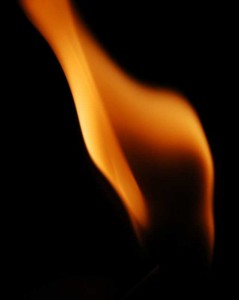
It only takes a spark.
Also at the top of the chimney is a cement piece known as the chimney crown. This protects the upper layer of bricks on the chimney. More importantly, it helps keep foreign material out of the chimney. In addition to many other substances, it keeps excess moisture from entering the chimney, which can cause a great deal of structural damage. In addition to the chimney crown, many people also choose to use a separate chimney cap.
The long part of the chimney, which allows smoke out of the fireplace, is known as the flue. Inside of the flue is a long piece called the flue liner. This liner helps protect the flue from general wear and tear as well as damage from water. Liners come in a variety of materials, including clay, tile, and stainless steel. However, stainless steel is typically considered the best choice because it is the most durable and lasts the longest.
Inside of the chimney is a piece called the damper. The damper opens and closes the flue, either letting smoke out or trapping it in. It is very important to make sure that the damper is always open when burning a fire in the fireplace. Leaving it closed will quickly fill the entire home with smoke and dangerous gas.
Also inside of the chimney is a smoke shelf. This is a small piece that catches material falling through the chimney. This could be anything from ash to debris from animal nests inside of the chimney. If these materials find their way into the fireplace, they could start a dangerous blaze that quickly gets out of control. It is very important to make sure that the flue is always clear of all debris, but the smoke shelf provides extra protection in the event that anything does make its way in there.
When material burns in the fireplace, it creates combustible gas. The smoke chamber compresses the gas so that it does not create a back draft. Without it, the gas may enter the fireplace or the home, causing both health and safety risks for the entire household.
There are many different parts to a chimney and each plays and important role in the safe use of the fireplace. In order to use the chimney and fireplace without incident, homeowners should understand exactly how each piece works and what it does. This will make it possible for them to quickly identify any problems and decide what action needs to be taken before using the chimney again.





